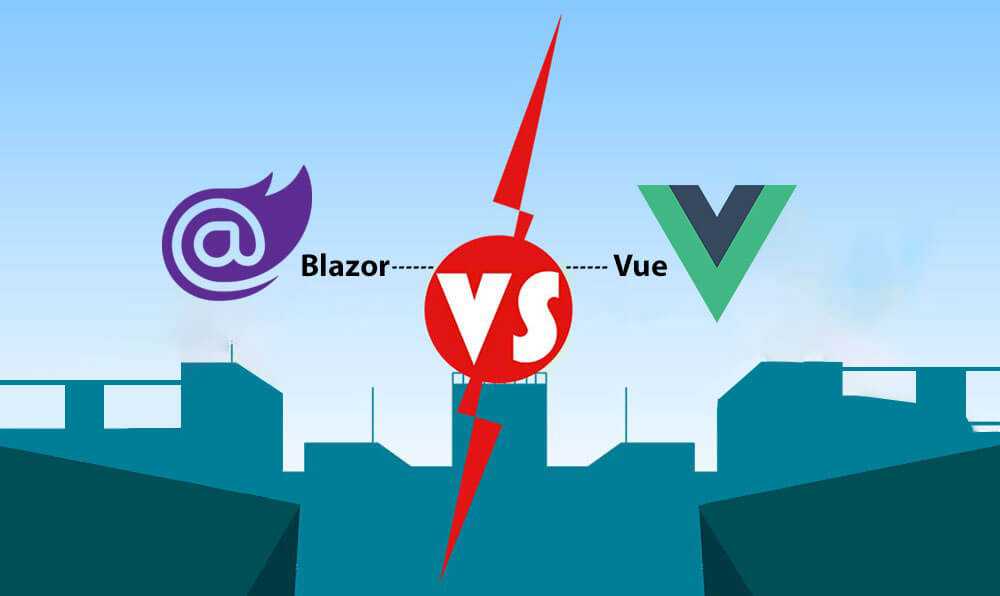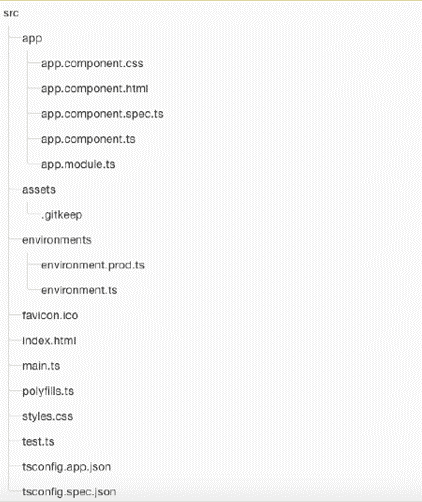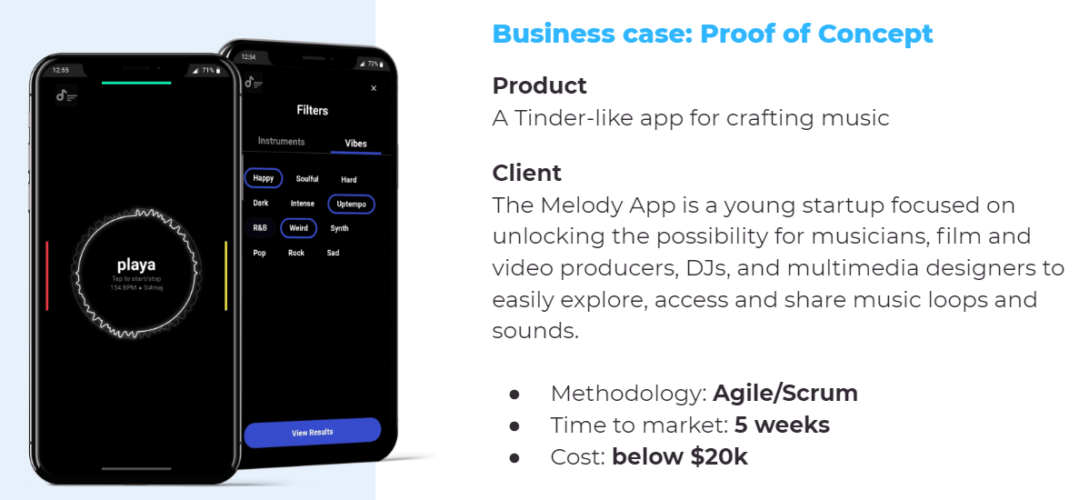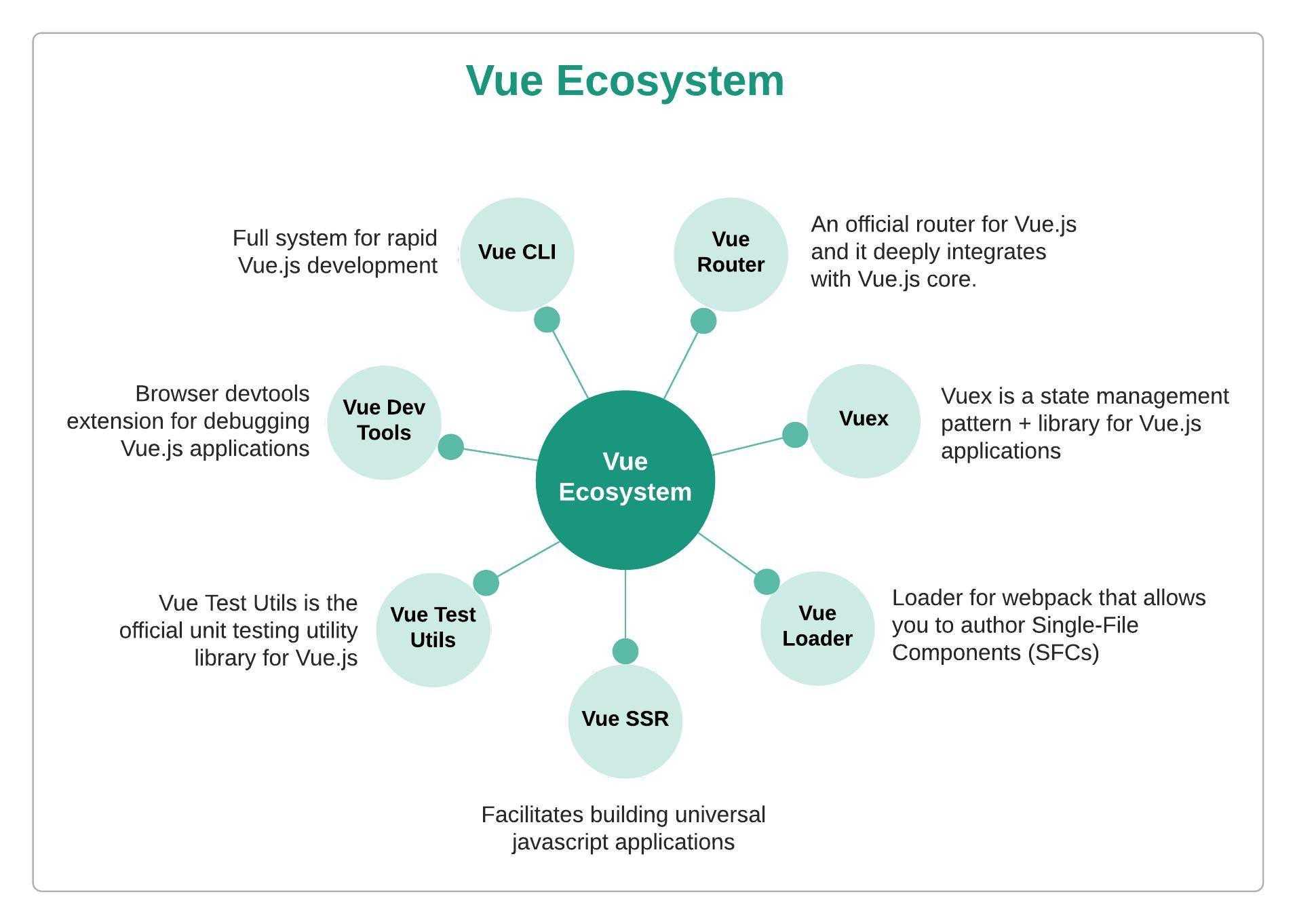Pros and Cons of Angular
Angular is a superheroic JavaScript MVVM framework, founded in 2009, which is awesome for building highly interactive web applications.
Benefits of Angular:
- New features like enhanced RXJS, the faster compilation (in under 3 seconds), new HttpClient launch.
- Detailed documentation that allows getting all necessary information for the individual developer without asking his colleagues. However, this requires more time for education.
- Two-way data binding that enables singular behaviour for the app which minimized risks of possible errors.
- MVVM (Model-View-ViewModel) allows developers to work separately on the same app section using the same set of data.
- Dependency injection of the features related to the components with modules and modularity in general.
The disadvantages of Angular:
- The complex syntax comes from the first version of Angular. Nevertheless, Angular 5 uses TypeScript 2.4 which is the least difficult to learn in comparison.
- Migration issues can appear while moving from the older version to the latest ones.
Companies that use Angular 5: Upwork, Freelancer, Udemy, YouTube, Paypal, Nike, Google, Telegram, Weather, iStockphoto, AWS, Crunchbase.
Companies that Use Angular
The first version of Angular was released by Google in 2010. The most current version released in 2019 is Angular 2+. Today, popular companies using Angular development services include Google, Microsoft Office, and Upwork.
For example, Angular provides Google with a highly functional framework to create larger applications. It is used in developing Google Cloud Console. Microsoft Office was able to launch two stand-alone applications with the help of the Angular framework. With the case of Upwork, it uses the framework to provide a responsive experience for its members.
Recap
Let’s recap what you’ve learned in this article:
Angular:
- Is a full framework
- Has a Regular DOM, which renders updates slower than React’s Virtual DOM
- The rendered JavaScript and HTML maintains a physical separation
- Utilizes Components: emerging web components standard
- Data Binding: two-way
- You must use TypeScript
- Mobile: Ionic and Cordova are slower than React Native
- Testing: Jasmine & Mocha
- Learning Curve is higher, but once you understand it you have an entire MVC framework
- Scalability: easy to scale
- Popularity: dropped since AngularJS (Angular 1)
- Open source: GitHub stars: 40,963 / Contributors: 732 / Issue: 2,162
- Size: larger, resulting in longer load times and performance on mobile
- Used on: Google, Nike, Forbes, Upwork, General Motors, HBO, Sony
React:
- Just a small view library
- Has a Virtual DOM, which renders updates faster than Angular’s Regular DOM
- Uses JSX, which combines markup and logic in the same file (making components easier to read)
- Components: emerging web components standard
- Data Binding: one-way
- You Can use ES6/7 JavaScript, although you can use Typescript or Flow if you so choose
- Mobile: React Native is faster than Angular’s solutions
- Testing: Jest & Enzyme
- Learning Curve is lower, but you only get the view. Because of this, you’re going to have to learn a slew of 3rd party libraries. Ex. State management (Redux or MobX), Asynchronous calls (react-promise, react-thunk, or react-saga), etc.
- Scalability: is more testable, so also easy to scale
- Popularity: has increased exponentially
- Open source: GitHub stars: 111,927 / Contributors: 1,242 / Issues: 287
- Size: smaller than Angular, so a bit faster
- Used on: Facebook, Airbnb, Uber, Netflix, Instagram, Whatsapp, Dropbox
- React Fiber will increase the speed of React dramatically
Do you want to become a React master? If so, check out Mosh’s React course. It’s the best React course out there! And if you liked this article, share it with others as well!
Johnny_Five
angularjavascriptreactReact NativeTypeScript
React vs Vue: comparison summary
React
As articulated earlier, React is to be chosen if you need to build up a complex web application, e.g. a SaaS product, or a multi-vendor marketplace.
Future maintenance and customization are much easier through the community volume. There are a large number of contributors and developers ready to build any application. Their total amount is greater than that of Vue.
Another reason to opt for ReactJS is a huge amount of libraries and tools that simplify and accelerate the development process. There is no need to write a function from scratch while the ready-made solution is available.
Recommended reading: Top Programming Languages to Shape Software Development.
Vue
On the flipside, Vue.js is a good choice in case you are interested in creating lightweight and easy-to-fix applications. The learning curve is lower. It allows mastering the framework in a short period of time and entering upon the application development.
The Vue community is smaller than React but it is growing at warp speed. Subsequent to contribution volume, the number of tools and libraries available grows as well.
Check our GitHub repository on Vue app best practices.
To sum up all the pros and cons, let’s have a look at the Vue vs React comparison table.
| React and Vue: Summary | ||
| Criteria | React.js | Vue.js |
| Maturity | Developed by Facebook in 2013, 174200 stars at Github | Developed by Evan You in 2014, 187800 stars on Github. |
| Community | 331,000 questions on StackOverflow | 83,400 questions on StackOverflow |
| Tooling | Third-party CLI — create-react-app | Official Vue-CLI |
| Flexibility | React does not provide you with state management out of a box. React router is a third-party package, not official one. | Vue provides you with state management (Vuex), Vue Router for application URL management, Vue Server-Side Renderer. |
| Mobile Development | React Native. It does not use WebView and HTML technology, but native components have bindings in JS and are wrapped in React. | Native Script. Its syntax is much easier for a web developer to understand using HTML / CSS / JavaScript. It uses Angular 2, so it has all the features of the framework, it has direct access to native platform API. |
| Performance | ||
| State management | Redux | Vuex |
| Storage Data Reception | More convenient syntax, but a large number of the details you skip down, and you cannot utilise the useSelector function very often. | Despite awkward syntax and inconvenient transfer of props, storage is available in each component, and the number of requisites that you have to pass is rather insignificant. |
| Development speed and cost | Depends on the task | Depends on the task |
As we can see, both Vue and React have powerful tools and features that help us in web development. However, while choosing what to adopt you need to bear in mind those differences presented in the table to make the right choice.
Blazor Vs Vue

Evan You developed Vue in 2014 after working for an organization using Angular in various projects. It is the core reason why Vue seems similar to Angular. Vue is also an open-source MVVM framework mirroring React and Angular for developing UIs and SPAs. But, Evan You tried his best to eliminate most of the points from Vue resembling Angular. Vue controls several sites like Alibaba, 9gag, Adobe and is considered the second most famous framework after React. Just like others, Blazor and Vue are also web frameworks. The distinction between them Vue is entirely based on javascript, while Blazor is not. Besides, Vue has been in the market longer than Blazor. However, both are open-source tools where Vue wins every time on the popularity angle.Read more: Authentication & Authorization in ReactJS
Преимущества фреймворков
Говоря простым языком, Javascript фреймворк — это набор методов и функций, которые написаны на языке Javascript и готовы к использованию разработчиками. Эти функции упрощают взаимодействие веб-приложения с сервером и ускоряют манипулирование элементами на веб-странице или в приложении.
Основным преимуществом использования фреймворков является тот факт, что они обеспечивают мгновенную обратную связь с теми, кто в настоящее время взаимодействует с вашим сайтом. На традиционных веб-сайтах без фреймворков первоначальный контент хранится на сервере, и любой новый контент, который необходимо загрузить, требует перезагрузки страницы.А при использовании фреймворком перезагружаются только необходимые блоки веб-сайта.
Такой подход сейчас используют социальные сети, например, Facebook. Если вы находитесь на странице «Новости» и переходите на страницу «Сообщения», перезагрузки страницы не происходит, вместо этого меняется несколько блоков на сайте.
Ниже упомянуты некоторые из наиболее примечательных преимуществ использования фреймворков:
- Стоимость.Стоимость разработки приложений для веб-сайтов снижается благодаря Javascript фреймворкам, поскольку они бесплатны и имеют открытый исходный код.
- Скорость разработки. У Javascript фреймворков хорошая документация (описание работы функций со своеобразной «книгой рецептов»), множество форумов и групп поддержки. Некоторые из Javascript-фреймворков поддерживаются такими известными компаниями, как Google или Facebook. Благодаря такому количеству информации увеличивается скорость разработки.
- Эффективность. Использование предварительно созданных функций и шаблонов позволяет реализовывать проекты более качественно. Разработчики в конечном итоге пишут меньше кода, что приводит к более быстрому и эффективному выполнению проектов.
101 Guide to get started on the chosen framework
Angular: Steps to begin development
- Setting up the development environment
- Install Node.js and NPM on your local machine
- Now globally install the Angular CLI
- Create a new project
- Launch the terminal
- Generate a new project by running the following command
ng new my-app
- Serve the Application
- Launch the server by navigating to the project directory cd my-app ng serve –open
- This will launch the App
- Editing your First Angular Component
- The first Angular Component would have been created by the CLI. This is the root component.
It can be found in the location ./src/app/app.component.ts and it is named app-root - You can now open the Component file and change the title by editing the title property to the name of your choice. export class AppComponent
{
title = ‘My First Angular App!’;
}
Style the component by opening src/app/app.component.css
h1 {
color: #369; font-family: Arial, Helvetica, sans-serif; font-size: 250%;
}
Continue to develop you app accordingly. Everything that make up your app, including all components, templates, styles, images, etc. of your app reside in the src folder.

Setting up a React project:
- Install the Sample Application
- Clone the es6-tutorial react repository with the following command git clone https://github.com/ccoenraets/es6-tutorial-react
- Next examine the React implementation of the mortgage calculator application
- Set-up Babel and Webpack
- Launch the command prompt
- Navigate cd to the es6-tutorial-react directory
- Create a package.json file through the following command: npm init
- Now install the React and React-dom modules through the following command: npm install react react-dom –save-dev
- Now install the Babel and Webpack modules with the following commands: npm install babel-core babel-loader webpack –save-dev
- install the ECMAScript 2015 and React presets with the following command: npm install babel-preset-es2015 babel-preset-react –save-dev
- Create a new file called webpack.config.js in the es6-tutorial-react directory and define it as follows:
- Add a new script called webpack that compiles app.js by opening package.json”scripts”: {“webpack”: “webpack”},
- Create a build directory in the es6-tutorial-react directory to host the compiled application version.
- Build & Run
- Go to the es6-tutorial-react directory in the command line and type this command: npm run webpack
- Go to your browser and launch the index.html file to test the application
Setting up a Vue project:
- Install Node.js and npm command in your system
- Install Vue CLI globally with the following command $ npm install -g vue-cli
- Initiate a new project with this command $ vue init webpack vueapp01
- The project should be created in the folder vueapp01 You can change into the required directory with the following command: $ cd vueapp01
- Install additional dependencies: $ npm install
- Launch the web server in development mode: $ npm run dev
- In case you want to build for production, use this command: $ npm run build
Ways to include Vue in projects
- Use CDN – Include the <script> tag in the HTML File.
- Use the NPM to install
- Use Bower to install
- Set up your project with Vue-cli
The bottom line is, the choice of your framework will depend on the type of requirement that you have coupled with the capabilities of your inhouse team. For instance, large apps can be developed with React but Object-oriented programming approach can be achieved only with Angular. Additionally, Vue is a perfect choice if you are looking for a lightweight framework.
For those who love massive ecosystems and more flexibility, React is the way to go.
Angular uses TypeScript and is ideal for programmers with a solid Object-Oriented Programming (OOP) background who need detailed guidance and structure while Vue is relatively simple to pick up and integrate for a small team of core developers.
Don’t forget you can download the entire blog here –
Conclusion
React and Vue both are great tools for developing an interactive user interface. To select which one is apt for your project, you have to take several factors into account, comprising your business needs, specific use case, developer availability, environment, timeframe, and budget.
From the above discussion on React vs Vue, if we talk about performance, Vue is on par with React.js.On the other hand, React.js is great for developing complex enterprise applications.
Contact Monocubed, if you have a web app in mind and require experienced developers to understand your project and develop using React or Vue.
Why React and Vue? Tools overview
One of the key factors for the comparison between React and Vue was that Evan You, Vue.js framework creator, used ReactJS as a source of inspiration for new framework development.
We will start our comparison of the technologies in question with a brief overview. Check the table below to learn the basic info about Vue vs React.
| React and Vue: General Info | ||
| Value | React.js | Vue.js |
| Definition | JavaScript library | JavaScript framework |
| Creator | Facebook/Jordan Walk | Evan Vue |
| First release | 2013 | 2014 |
| Website | https://reactjs.org/ | https://vuejs.org/ |
| Virtual DOM | + | + |
| Open Source | + | + |
| Syntax | JSX | (HTML (default), JSX |
| Key features |
|
|
| Popular websites / apps |
|
Similarities
These web development tools are particularly similar to each other. We can behold it even from Vue.js official documentation, where such similarities are displayed. The main initial common points are:
- Virtual DOM;
- Reactive and Component Structure;
- JavaScript usage;
- Support of TypeScript;
- Seamless version migration;
- Backward compatibility;
- A great variety of libraries and tools;
- PWA support;
- Flexibility, performance, and speed;
- Big, active communities.
Differences
When it comes to the core differences between React and Vue, we should mention the difference in terms. Vue is a framework, while React is a library.
Another difference comes with the approach to rendering content to Document Object Model. While React uses JSX exceptionally, Vue uses HTML templates apart from JSX.
Finally, React and Vue differ in terms of pre-built and third party tools. React comes with competent architecture, DOM manipulation, and component state management. All other functionality is built and supported by the community members.
As a result of this approach, developers get more freedom. At the same time, newbies may find an abundance of third-party instruments challenging.
When it comes to Vue, its widespread tools and libraries are developed by its core team. In addition to them, there are community-based solutions as well.
To conclude, Vue has a more balanced combination of third-party and pre-built tools that satisfies the needs of both experienced developers and newbies.
The most popular applications created with React and Vue
React and Vue are considered the best Javascript frameworks (or tools). So it comes as no surprise that many companies use them in their custom software product development.
Popular websites created with Vue.js:
- Behance;
- Gitlab;
- Trivago;
- Statista;
- 9GAG.
Popular websites using React:
Компоненты
Компоненты — это разделение кода, его инкапсулирование, на независимые части позволяющие повторно использовать код. Компоненты образуют древовидную иерархию.
Разделение программного кода на некие отдельные компоненты, которые потом взаимодействуют между собой, хорошее решение при построении качественных приложений. Такие приложения легче поддерживать, ведь код каждого компонента написан так, чтобы было как можно меньше зависимостей между компонентами. Ведь когда первый код зависит от второго, и в этом втором, что-то поменялось, то можно ожидать, что в первом коде что-то пойдет не так как ожидалось.
Vue.js позвляет разделять весь код приложения на компоненты и даже асинхронно загружать необходимый компонент в нужный момент.
Можно представить 3 вида разделения кода приложения:
- постраничное разделение
- разделение вне видимости
- разделение по условию
2. Разделение кода вне видимости
Разделение кода приложения вне видимости — это когда есть какая-та часть, которую нужно отобразить лишь в тот момент, когда другая часть находится за пределами отображаемой, то есть видимой на данный момент, части приложения. Например, ваше приложение отобразило на экране 5 постов, при прокрутке чуть ниже, приложение подгружает асинхронно еще 5 постов, и так далее. Это очень нужная вещь, которая позволяет экономить ресурсы приложения, сделав его производительней в работе.
3. Разделение кода по условию
Когда какая-то часть приложения должна отображаться в зависимости от состояния какого-либо элемента или выполнения действия, то можно использовать разделение кода по условию. Например, если пользователь находится в одной группе, то ему можно подгружать один тип контента, если пользователь во второй группе, то соответственно ему отображаем другой тип контента и так далее. Сюда же можно отнести какие-либо всплывающие окна, вкладки, отображение элементов в зависимости от состояния различных переключателей.
What is React?
In 2013, React, a JavaScript library supported by Facebook, became open-sourced. This framework popularized a concept in web development known as component-based architecture, that has many advantages like:
-Modular and cohesive components, which make them heavily reusable and that contributes to accelerating the development time.
-Used in mobile development, which allows developers to reuse the logical part in mobile apps, with only needing to tweak the view.
-Easy maintenance and improvement, because components are self-contained.
React quickly took the market by storm and overshadowed most of the frameworks at the time, including AngularJS. Therefore, in 2016, Google upgraded it’s JavaScript framework as a consequence of the community’s enthusiasm with the component-based architecture: they called it Angular2.
Общая информация
1.Имеет автоматическую фильтрацию просмотра
Ractive JS
React
Имеет механизм для фильтрации просмотров, на основе переменных (например, при поиске) без необходимости написания дополнительных кодов.
2.Использует движок ( механизм) шаблонов
Ractive JS
React
Движок шаблонов позволяет легко и гибко создать UI.
3.Поддерживает функции вычисления свойств
Ractive JS
React
Позволяет использовать функции свойства для вычисления свойств объектов.
4.Использует JSX для шаблонов
Ractive JS
React
JSX — это шаблонный движок, который позволяет разработчикам писать разметки непосредственно в их код, который затем живой или предварительно скомпилированный в обычный JavaScript. Это исключает разделения между разметкой и кодом и предлагает увеличение скорости для языков шаблонов на основе строки.
5.Расширяет HTML
Ractive JS
React
Некоторые люди рассматривают это как преимущество, так как это позволяет избежать накладных расходов из другого языка шаблонов.
6.Опубликован под лицензией MIT License
Ractive JS
React
Лицензия MIT License является очень разрешающей лицензией, которая позволяет все виды использования, в том числе бизнес-использование, без гарантии.
7.Интегрируется с другими MV* структурами
Ractive JS
React
Может быть использован для замены части другой структуры, не удаляя существующих функций.
8.Поддерживает частичный просмотр
Ractive JS
React
Позволяет, для установления, просматривать щаблоны в верхнем уровне просмотра внутри шаблона.
9.Имеет популярный шаблонный проект
Ractive JS
React
Имеет официальный или хорошо известный шаблонный проект, который выкладывает рекомендуемую структуру файлов и позволяет разработчикам начать работу быстрее.
Round 5: Mobile
React Native allows you to reuse up to 99% of JS code between Android and iOS with React-like components. The result is a cross-platform app that looks and performs like a native iOS/Android app.
You can create 100% native widgets that control their own style. The React Native framework handles the presentation layer as a pure state output. This makes it easy to create companion apps for iOS/Android with a native look and performance. If you want to learn more about the cross-platform tech, check our article on the pros and cons of React Native.

Melody app: a Tinder-like search engine for musical beats, built by MindK using React Native
Although Vue lags behind React, it offers several solutions for mobile development. First, you have NativeScript that allows you to write Vue applications and compile them to native iOS/Android apps.
Then comes Capacitor from the team behind Ionic (by the way, we have an article that compares Ionic vs React Native). You can install Capacitor into any existing Vue website and add native iOS/Android functionality using a simple API.
Lastly, you have Vue Native which combines advantages of Vue and React Native ecosystems. It features declarative rendering, two-way binding, and a set of basic components for creating a cross-platform native app.
Winner: React Native is the undisputed king of cross-platform development.
Angular vs React vs Vue: Which One Is Best?
Table of Contents
VueJS is a JavaScript library for building web interfaces. Combining with some other tools it also becomes a “framework”. I think you already know that Vue.js is one of the top JavaScript frameworks and it is replacing Angular and React in many cases. This brings in the topic of this blog Vue.js is good, but is it better than Angular or React?
In case you’ve never heard or used Vue.js before, you are probably thinking: Come on! yet another JavaScript framework! We get it. However, VueJS is not new in the custom software development domain. It was first released in 2013 and now it has 171k stars on Github and downloaded a number of times this year.

Source: Github
Hence, neither Vue.js is new nor less popular than other frameworks as per my research. Now, let’s view the winning factors present in Vue.js.
Last blog: 9 Top JavaScript Frameworks List In Today’s Time(updated)
Why is Vue.js special?

Source: Google
The greatest benefit of Vue in the war of Vue vs Angular is its absence of pedigree. It is fresh and has little baggage. It has been learning from the mistakes and successes of React & Angular. The way we see it, Vue is lightweight & easy to learn.

It has got some fairly basic docs but they do a good job, and while there isn’t a great deal to learn compared to angular – this is a good thing as it’s deceptively powerful. PageKit, Python China are two of the projects using Vue among many. Here’s the list. Also, it has a two-way data binding facility like Angular and Virtual DOM like React.
Now, we hope your basic concept about Vue.js is quite clear. Hence, let’s start discussing React vs Vue vs Angular.

































